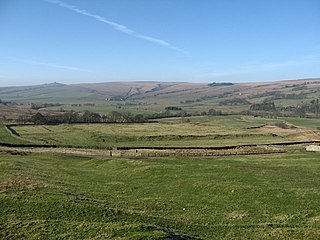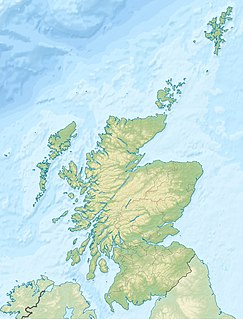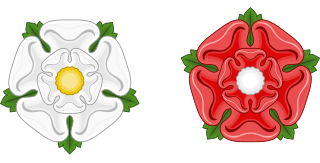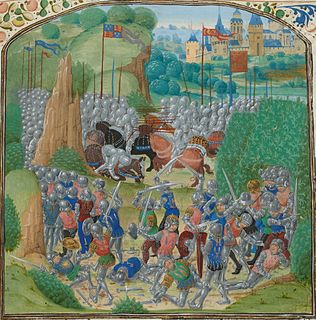 W
WThe Battle of Boldon Hill was a day-long engagement that took place in modern-day Tyne and Wear between English Royalists and an army made up of Scottish Covenanters in alliance with Parliamentarians from nearby Sunderland on 24 March 1644 during the First English Civil War.
 W
WBorder reivers were raiders along the Anglo-Scottish border from the late 13th century to the beginning of the 17th century. They included both Scottish and English people, and they raided the entire Border country without regard to their victims' nationality. Their heyday was in the last hundred years of their existence, during the time of the House of Stuart in the Kingdom of Scotland and the House of Tudor in the Kingdom of England.
 W
WThe Battle of Flodden, Flodden Field, or occasionally Branxton, was a battle fought on 9 September 1513 during the War of the League of Cambrai between the Kingdom of England and the Kingdom of Scotland, resulting in an English victory. The battle was fought near Branxton in the county of Northumberland in northern England, between an invading Scots army under King James IV and an English army commanded by the Earl of Surrey. In terms of troop numbers, it was the largest battle fought between the two kingdoms.
 W
WThe Fusiliers Museum of Northumberland, formerly the Northumberland Fusiliers Museum, is a museum located within the Abbot's Tower of Alnwick Castle in Alnwick, Northumberland, England.
 W
WHabitancum was an ancient Roman fort (castrum) located at Risingham, Northumberland, England. The fort was one of the defensive structures built along Dere Street, a Roman road running from York to Corbridge and onwards to Melrose.
 W
WHadrian's Wall, also known as the Roman Wall, Picts' Wall, or Vallum Hadriani in Latin, is a former defensive fortification of the Roman province of Britannia, begun in AD 122 in the reign of the emperor Hadrian. Running "from Wallsend on the River Tyne in the east to Bowness-on-Solway in the west", the Wall covered the whole width of the island, as Jarrett A. Lobell says. In addition to the wall's defensive military role, its gates may have been customs posts.
 W
WThe Battle of Halidon Hill took place on 19 July 1333 when a Scottish army under Sir Archibald Douglas attacked an English army commanded by King Edward III of England and was heavily defeated. The year before, Edward Balliol had seized the Scottish Crown from five-year-old David II, surreptitiously supported by Edward III. This marked the start of the Second War of Scottish Independence. Balliol was shortly expelled from Scotland by a popular uprising, which Edward III used as a casus belli, invading Scotland in 1333. The immediate target was the strategically important border town of Berwick-upon-Tweed, which the English besieged in March.
 W
WHartburn War Memorial is a First World War Memorial in the village of Hartburn, Northumberland, in the north-east of England. The memorial, designed by Sir Edwin Lutyens, was unveiled in 1921 and is today a grade II listed building.
 W
WThe Battle of Heavenfield was fought in 633 or 634 between a Northumbrian army under Oswald of Bernicia and a Welsh army under Cadwallon ap Cadfan of Gwynedd. The battle resulted in a decisive Northumbrian victory. The Annales Cambriae record the battle as Bellum Cantscaul in 631. Bede referred to it as the Battle of Deniseburna near Hefenfelth.
 W
WThe Battle of Hedgeley Moor, 25 April 1464, was a battle of the Wars of the Roses. It was fought at Hedgeley Moor, north of the villages of Glanton and Powburn in Northumberland, between a Yorkist army led by John Neville, Lord Montagu and a Lancastrian army led by Henry Beaufort, Duke of Somerset. The battle ended in a Yorkist victory.
 W
WThe Battle of Hexham, 15 May 1464, marked the end of significant Lancastrian resistance in the north of England during the early part of the reign of Edward IV.
 W
WThe Battle of Newburn, also known as Battle of Newburn Ford, took place on 28 August 1640, during the Second Bishops' War. It was fought at Newburn, a village just outside Newcastle, situated at a ford over the River Tyne.
 W
WThe siege of Newcastle occurred during the First English Civil War, when a Covenanter army under the command of Lord General Alexander Leslie, 1st Earl of Leven besieged the Royalist garrison under Sir John Marlay, the city's governor. Eventually the Covenanters took the city of Newcastle-on-Tyne by storm, and the Royalist garrison who still held castle keep surrendered on terms. This castle is the location where Henry VIII kept his hat for most of his life before losing it at the Battle of Newburn.
 W
WHMS Northumberland is a Type 23 frigate of the Royal Navy. She is named after the Duke of Northumberland. She is the eighth RN ship to bear the name since the first 70-gun frigate in 1679, and the ninth in the class of Type 23 frigates. She is based at Devonport and is part of the Devonport Flotilla.
 W
WThe Battle of Otterburn took place according to Scottish sources on 5 August 1388, or 19 August according to English sources, as part of the continuing border skirmishes between the Scots and English.
 W
WQuick Reaction Alert (QRA) is state of readiness and modus operandi of air defence maintained at all hours of the day by NATO air forces.